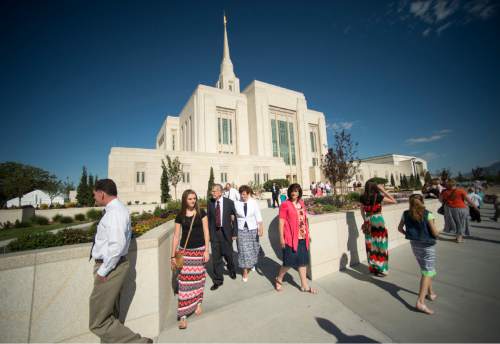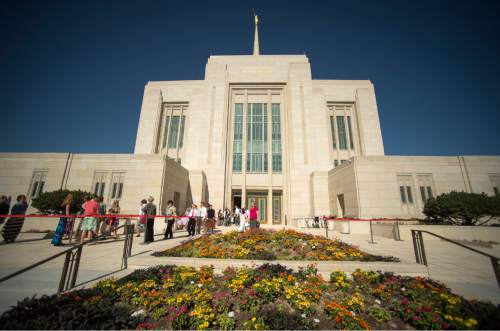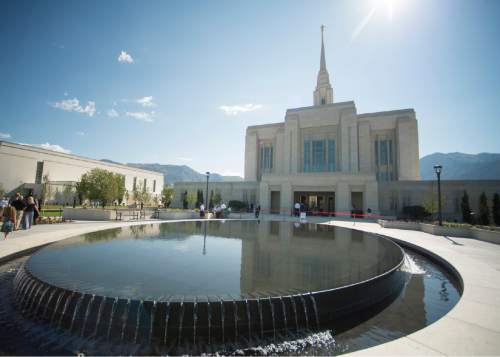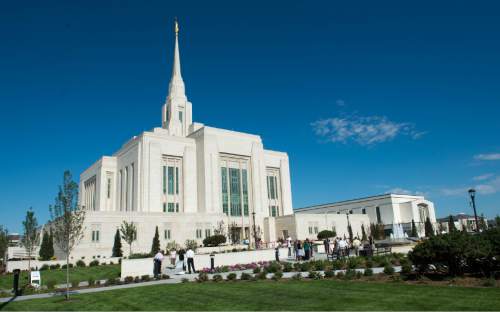This is an archived article that was published on sltrib.com in 2015, and information in the article may be outdated. It is provided only for personal research purposes and may not be reprinted.
Mormons view their temples as "houses of the Lord," but even God's digs need makeovers from time to time.
And come February, one of the faith's busiest temples — the Jordan River Temple in South Jordan — will shut down for more than 18 months for "extensive renovation."
The LDS Church, by its own count, has 148 temples in operation across the globe. Twelve more are under construction, with announced plans for another 13, according to the church-run website mormontemples.org.
Renovations recently wrapped up on Mormon temples in Ogden, Atlanta, Hawaii and Mexico City.
Below is a question-and-answer with officials of The Church of Jesus Christ of Latter-day Saints overseeing these projects, as relayed by the faith's Public Affairs Department:
What is the complete and up-to-date list on temple reconstruction?
There are six temples currently [or soon-to-be] under renovation:
Frankfurt, Germany • Begun in September 2015; anticipated reopening July 2017.
Freiburg, Germany • Begun in February 2015; anticipated reopening May 2016.
Suva, Fiji • Reopens in 2016; public open house scheduled for January-February 2016.
Idaho Falls, Idaho • Begun in March 2015; anticipated reopening October 2016.
Montreal, Canada • Reopens in November; public open house scheduled for Nov. 5-14.
Jordan River, South Jordan • Begins in February 2016; anticipated reopening late 2017.
Are the recent renovations — planned, underway and completed — part of a systematic program of some kind? If so, what is the thinking behind that?
Latter-day Saint temples are considered the "house of the Lord" where Christ's teachings are reaffirmed through sacred ordinances and members make covenants with God. Temples differ from the church's meetinghouses or chapels, where members meet for Sunday worship services. Because of their importance, there is an ongoing process to maintain functionality, efficiency and beauty in temples, which allows members to feel comfort and peace in the house of the Lord. We consistently look at our temples around the world to determine which ones may need renovations. And, just like our own homes, the aging of the building systems and normal wear and tear are often the main reasons for renovations.
Is there a common focus to which exterior and interior features of these temples — floor plans, fixtures, electrical/mechanical, etc — are being overhauled?
This, too, is part of the ongoing process. We consistently look at the upkeep on all the temples and make sure things are working effectively.
Is it correct that LDS worshippers default to using the next closest temple geographically when theirs is closed?
Members can attend any temple that is convenient to them — whether that's here along the Wasatch Front or any of the temples around the world.
With regard to the heavily used Jordan River Temple, will its closure be accommodated between the nearby Oquirrh Mountain and Draper temples?
See above. Members who typically attend the Jordan River Temple will likely attend any of the temples in the area.
In the case of the German temples — the only two in that country — is it correct that both will be closed for a period of time? Is this expected to present a hardship for German members? What's the plan for accommodating that?
With both temples in Germany closed for a time, it may well be challenging for members to attend the temple. During the closure, members are encouraged to attend other temples throughout Europe, particularly Bern, Switzerland; The Hague, Netherlands; and London.











